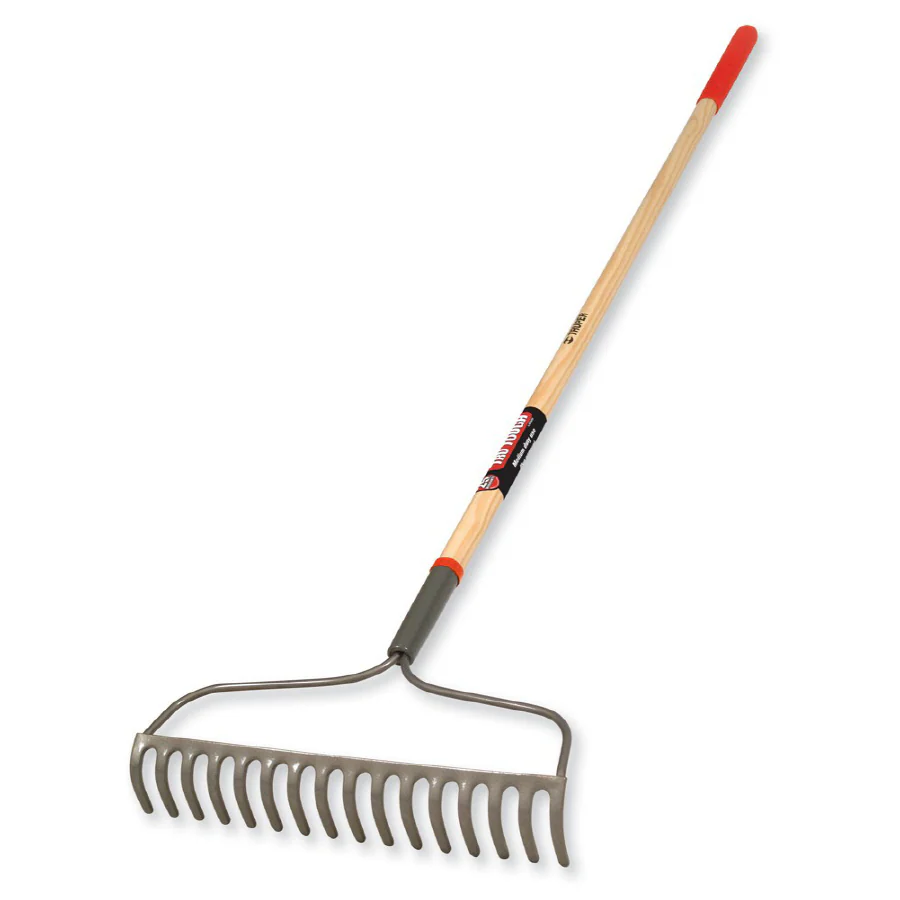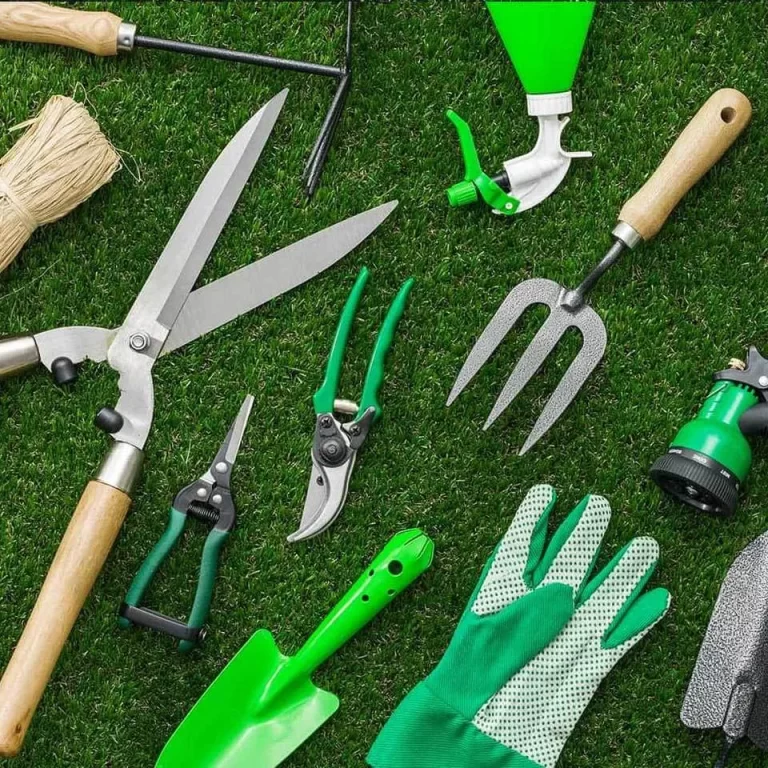
Rake Tool: Maintaining Your Outdoor Space with Ease
Introduction to Rake Tools
Rake tools play a crucial role in outdoor maintenance. These versatile implements help manage leaves, grass, and debris. Gardeners and landscapers rely on rakes for various tasks. Rake tool come in different shapes and sizes. Each type serves a specific purpose. Understanding rake tools improves outdoor work efficiency.
The History of Rake Tools
Rake tools have a long and rich history. Ancient civilizations used early versions of rakes. These tools evolved alongside agricultural practices. Medieval farmers refined rake designs for field work. The Industrial Revolution brought mass-produced metal rakes. Today’s rakes combine traditional designs with modern materials. This evolution reflects changing needs in gardening and landscaping.
Types of Rake Tools
Leaf Rakes
Leaf rakes excel at gathering fallen leaves. Wide, fan-shaped heads characterize these rakes. Flexible tines allow for gentle lawn treatment. Leaf rakes come in various sizes. Larger rakes cover more ground quickly. Smaller versions work well in tight spaces. Many leaf rakes feature adjustable heads. This feature adapts to different surfaces and tasks.
Garden Rakes
Garden rakes tackle heavier outdoor work. Straight, rigid tines define these tools. They excel at breaking up soil clumps. Garden rakes level ground for planting. These tools also spread mulch effectively. Metal heads provide durability for tough jobs. Some garden rakes feature dual-sided heads. This design offers versatility in various tasks.
Thatch Rakes
Thatch rakes address lawn health issues. Sharp, curved tines remove dead grass buildup. This process improves air and water penetration. Thatch rakes often feature dual-sided heads. One side removes thatch; the other side levels. These specialized tools require careful use. Regular thatching maintains a healthy lawn ecosystem.
Shrub Rakes
Shrub rakes navigate tight spaces effectively. Narrow heads allow access between plants. These rakes work well under bushes and trees. Lightweight designs reduce plant damage risk. Shrub rakes often feature shorter handles. This design improves control in confined areas. Gardeners appreciate their precision in delicate settings.
Bow Rakes
Bow rakes combine strength and versatility. A curved bow supports sturdy metal tines. These rakes excel at moving heavy materials. Landscapers use bow rakes for gravel and soil. The tools also work well for mulch distribution. Some bow rakes feature interchangeable heads. This feature adapts to various outdoor tasks.
Rake Tool Materials
Wood
Wood remains a popular material for rake handles. It offers a traditional look and feel. Wood absorbs vibration during use. This quality reduces user fatigue. Hardwoods like ash provide durability. Proper care extends the life of wooden handles. Some users prefer the warmth of wood grips. Environmental concerns drive interest in sustainable wood sources.
Metal
Metal components add strength to rake tools. Steel tines withstand heavy use. Aluminum handles offer lightweight durability. Some rakes feature all-metal construction. These tools suit commercial and heavy-duty use. Metal rakes resist weathering and decay. Proper maintenance prevents rust and corrosion. Many users appreciate the longevity of metal rakes.
Plastic
Plastic rakes offer affordability and light weight. These tools suit casual gardeners well. Plastic resists rust and rot. Many plastic rakes feature ergonomic designs. Vibrant colors make plastic rakes easy to spot. Some concerns exist about durability. Higher-quality plastics address these issues. Recycled plastics appeal to eco-conscious consumers.
Fiberglass
Fiberglass handles combine strength and light weight. These rakes resist weather damage effectively. Fiberglass doesn’t conduct electricity. This quality improves safety near power lines. The material dampens vibrations during use. Fiberglass rakes often feature ergonomic grips. These tools suit both casual and professional users. Initial costs may be higher than other materials.
Choosing the Right Rake Tool
Yard Size Considerations
Yard size influences rake tool selection. Larger yards benefit from wider rake heads. This design covers more ground efficiently. Smaller yards may require more maneuverable rakes. Consider storage space when choosing rake size. Some rakes feature collapsible designs. These tools save space in small sheds or garages. Multiple rake sizes suit varied landscape needs.
Specific Task Requirements
Different tasks demand specialized rake tools. Leaf collection requires flexible tines. Soil preparation needs sturdier rake designs. Consider the primary use for the rake. Some users benefit from multi-purpose rakes. These tools adapt to various outdoor tasks. Specialized rakes excel in specific applications. Assess regular yard maintenance needs before purchasing.
User Physical Capabilities
User comfort affects rake tool effectiveness. Handle length should suit the user’s height. Lightweight materials reduce fatigue during extended use. Ergonomic grips improve control and comfort. Some rakes feature adjustable handles. This design accommodates different users. Consider any physical limitations when selecting tools. Proper tool fit enhances work efficiency and safety.
Durability and Maintenance
Long-term value depends on rake durability. Higher-quality materials often last longer. Consider the expected frequency of use. Heavy-duty rakes suit frequent or commercial use. Casual gardeners may prefer simpler designs. Evaluate maintenance requirements for different materials. Some rakes need regular oiling or cleaning. Replaceable parts extend tool lifespan. Balance initial cost with long-term durability.

Proper Rake Tool Use Techniques
Body Positioning
Proper body positioning prevents strain during raking. Stand with feet shoulder-width apart. This stance provides a stable base. Keep the back straight to reduce injury risk. Use leg muscles to power raking motions. Avoid twisting the spine while working. Take frequent breaks to prevent fatigue. Alternate hands to balance muscle use. These techniques improve efficiency and safety.
Raking Patterns
Efficient raking patterns save time and energy. Start at one end of the work area. Work in straight lines for best results. Overlap each stroke slightly. This technique ensures thorough coverage. For leaves, rake towards a central collection point. When leveling soil, rake in multiple directions. This approach creates an even surface. Adapt patterns to landscape features and obstacles.
Tool Care During Use
Proper tool care extends rake lifespan. Avoid striking hard objects with rake tines. This precaution prevents bending or breaking. Clean rakes after each use. Remove debris stuck between tines. Store rakes in a dry location. Hang tools to prevent warping or damage. Oil wooden handles periodically. This practice prevents drying and cracking. Address any damage promptly to prevent further issues.
Rake Tool Maintenance and Storage
Cleaning Procedures
Regular cleaning maintains rake effectiveness. Remove dirt and debris after each use. Use a stiff brush for stubborn materials. Wash metal parts with mild soap if needed. Dry tools thoroughly before storage. This practice prevents rust formation. Clean wooden handles with a damp cloth. Avoid soaking wood to prevent swelling. Proper cleaning extends tool lifespan significantly.
Sharpening and Repair
Some rake tools benefit from occasional sharpening. Use a file to hone dull garden rake tines. This process improves soil penetration. Replace broken or bent tines when possible. Many rake heads allow individual tine replacement. Tighten loose screws and bolts regularly. This maintenance prevents further damage. Consider professional repair for complex issues. Proper care reduces the need for premature tool replacement.
Optimal Storage Solutions
Proper storage protects rake tools between uses. Hang rakes to prevent bending or warping. Use wall-mounted racks or pegboards. These solutions save floor space. Store tools in a dry, covered area. This practice prevents rust and decay. Consider protective covers for rake heads. Covers prevent accidental injury. Group similar tools for easy access. Labeled storage areas improve organization. Proper storage extends tool life and enhances safety.
Innovative Rake Tool Designs
Adjustable Rakes
Adjustable rakes offer versatility in yard work. These tools feature expandable heads. Users can modify rake width as needed. This design suits various leaf sizes and densities. Adjustable rakes also navigate tight spaces easily. Many models lock in different positions. This feature ensures stability during use. Collapsible designs improve storage efficiency. Adjustable rakes appeal to users with diverse landscaping needs.
Ergonomic Handles
Ergonomic rake handles reduce user strain. Curved designs align with natural arm positions. This shape minimizes wrist and shoulder stress. Padded grips enhance comfort during extended use. Some handles feature multiple grip positions. This design accommodates different tasks and user heights. Ergonomic rakes suit users with physical limitations. These tools also benefit professionals working long hours.
Multi-function Rakes
Multi-function rakes combine several tools in one. These designs may include rake and hoe features. Some incorporate seed spreaders or aerators. Multi-function tools reduce the need for multiple implements. They save storage space in small sheds. Users appreciate the convenience for varied tasks. These rakes suit casual gardeners with limited tool budgets. Some professionals prefer specialized tools for specific jobs.
Electric and Battery-Powered Rakes
Power rakes offer alternatives to manual tools. These devices suit large property maintenance. Electric models provide consistent power. Battery-powered versions offer cordless convenience. Power rakes excel at removing thatch and leaves. They reduce physical strain during extensive work. Some models feature adjustable settings. This allows customization for different lawn types. Power rakes require proper training for safe operation.

Environmental Considerations in Rake Tool Use
Sustainable Materials
Sustainable rake materials gain popularity. Manufacturers explore bamboo and recycled plastics. These materials reduce environmental impact. Sustainable options often match traditional tool durability. Some companies use responsibly sourced wood. Consumers increasingly consider eco-friendly options. Sustainable rakes may carry higher initial costs. Long-term benefits include reduced resource consumption. Environmentally conscious users appreciate these alternatives.
Leaf Mulching
Rake tools facilitate beneficial leaf mulching. This practice returns nutrients to the soil. Mulching reduces the need for bagging and disposal. Some rakes feature designs that shred leaves. This process speeds decomposition. Mulched leaves improve soil structure. They also provide winter protection for plants. Proper mulching techniques require rake tool skills. Users benefit from learning effective mulching methods.
Composting Practices
Rakes play a crucial role in composting. These tools gather organic matter efficiently. Rakes help turn and aerate compost piles. This process speeds decomposition. Specialized compost rakes feature sturdy tines. They withstand the rigors of compost management. Composting reduces waste sent to landfills. It also produces valuable soil amendments. Rake tools facilitate effective composting practices. Users contribute to sustainable gardening through these methods.
Rake Tools in Professional Landscaping
Commercial-Grade Options
Professional landscapers require durable rake tools. Commercial-grade rakes feature reinforced construction. These tools withstand daily heavy use. Many professional rakes use high-quality metals. Ergonomic designs reduce worker fatigue. Some commercial rakes offer interchangeable heads. This feature increases versatility on job sites. Professional-grade tools often carry higher price tags. The investment pays off in longevity and efficiency.
Specialized Landscape Rakes
Specialized rakes address specific landscaping needs. Large bow rakes level extensive areas quickly. Dethatching rakes maintain turf health. Soil rakes prepare ground for seeding. Stone rakes manage gravel and rock gardens. Each specialized tool improves work efficiency. Professional landscapers often carry multiple rake types. This variety ensures the right tool for each task. Specialized rakes require proper technique for best results.
Rake Tool Safety in Commercial Use
Safety concerns increase with professional rake use. Proper training reduces injury risks. Workers should understand correct body mechanics. High-visibility tool colors improve safety. Reflective tape on handles aids in low-light conditions. Regular tool inspections prevent accidents. Replace damaged rakes promptly. Encourage reporting of unsafe conditions. Provide appropriate safety gear for workers. These practices create a safer work environment.


